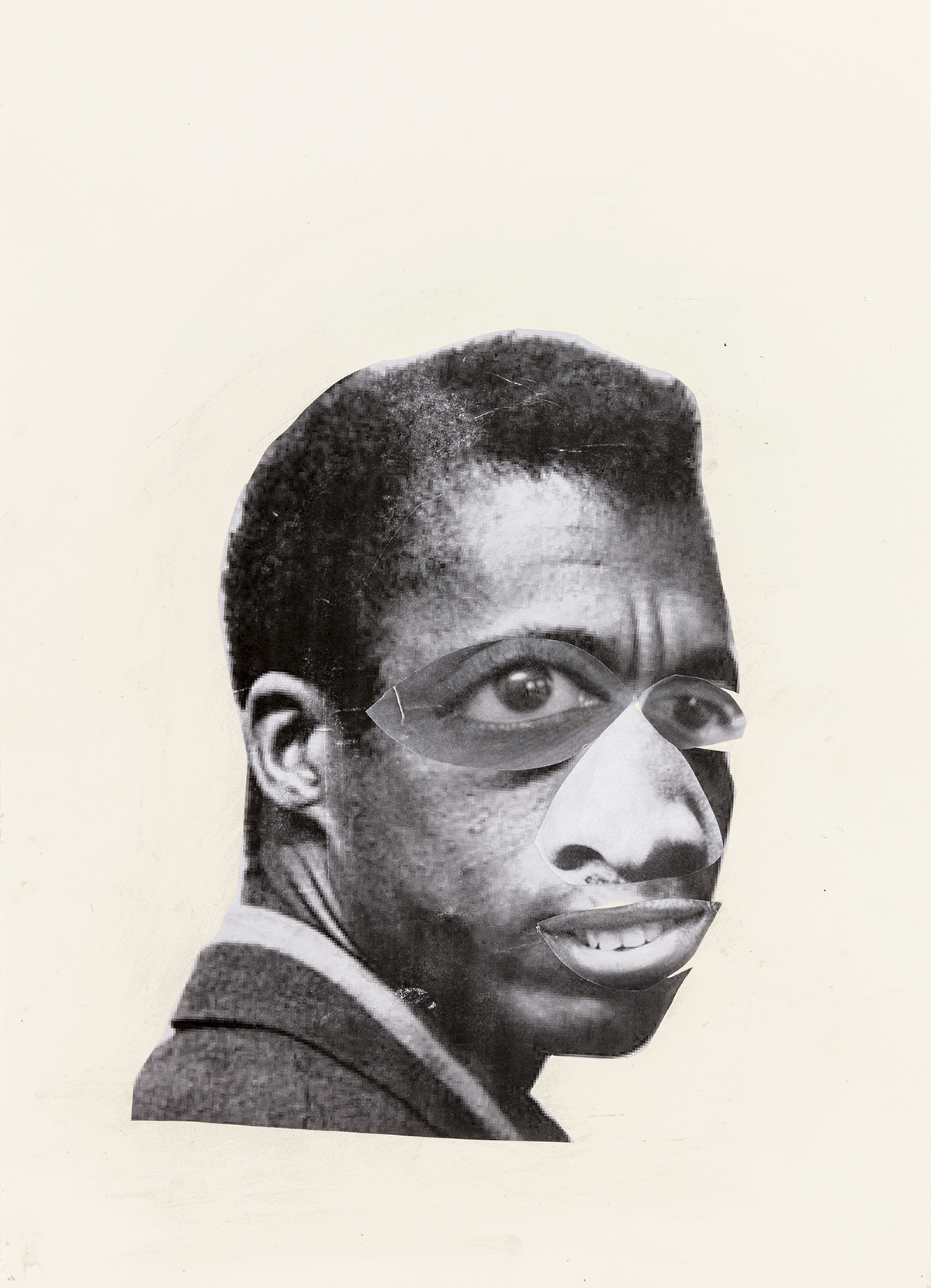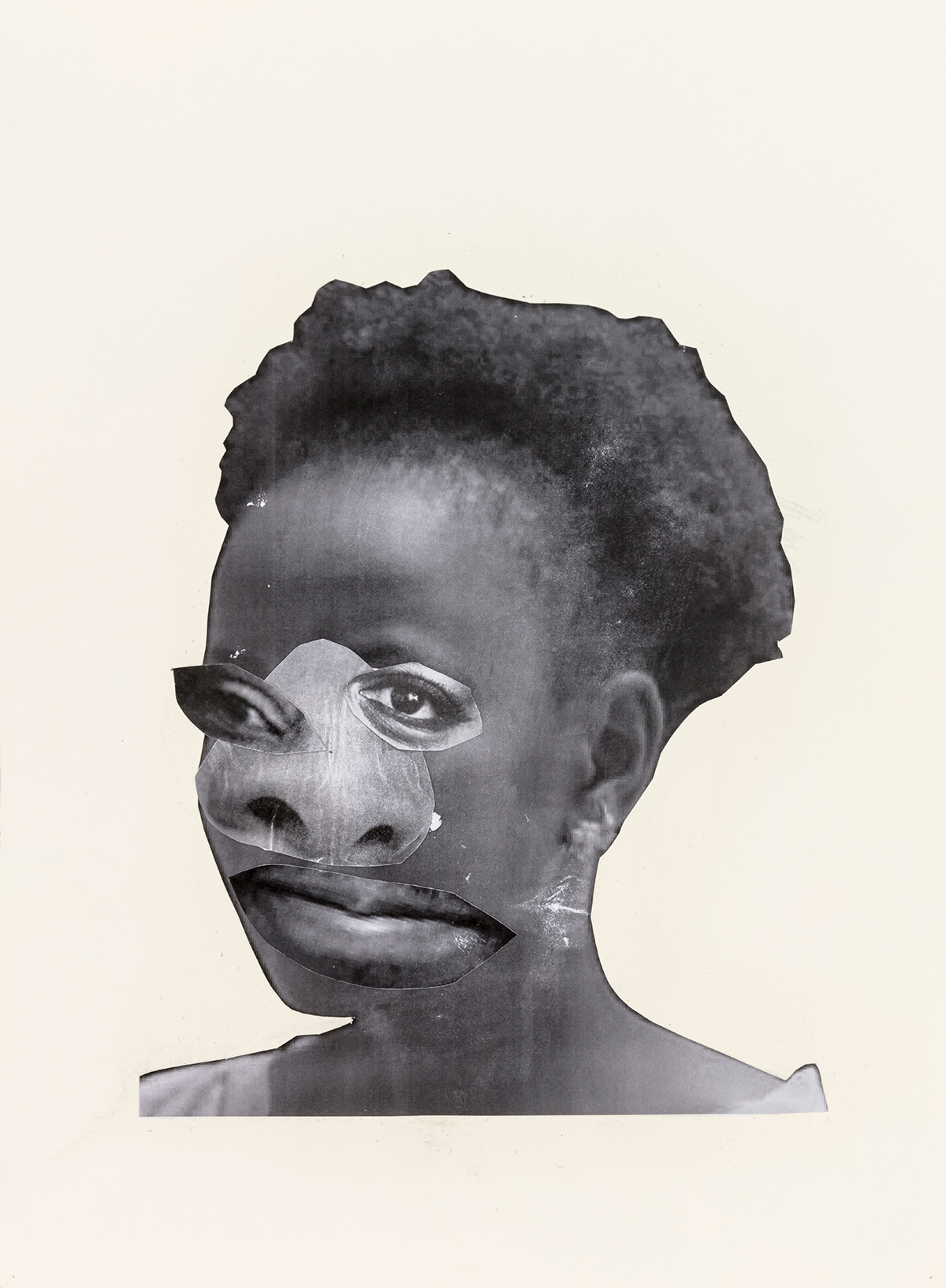South African artist Neo Matloga is one of three artists (together with Funda Gül Özcan and Lonneke van der Palen) nominated for the Volkskrant Fine Art Prize 2019. The twelfth iteration of the art prize is organised by Stedelijk Museum, Dutch daily newspaper Volkskrant and Dutch broadcaster AVROTROS. The art prize is accompanied by a three-month long exhibition (March – June) of the artists’ works in Schiedam, Netherlands, during which the winner will be announced. The Volkskrant Fine Art Prize is presented to artists aged 35 or younger, living and working in the Netherlands.
Matloga’s work concerns itself with the domestic—using primarily a black, grey and white palette with charcoal, ink wash and collage, he depicts the everyday lives of black South African families. Matloga’s creations are flat but not unexciting; faces are often assembled from photographic cut-outs to create distorted, strong and compelling features. An oversized nose, lips too large, eyes and ears twisted out of shape—this contortion, warping and bending exposes the politics of beauty; what is beauty, if not a judgement based on discredited, fusty hierarchies tainted with sexism, racism, colonialism and class privilege (G Perry).
This nomination into the Volkskrant Fine Art Prize follows Matloga’s commanding art practice with his work featured in prestigious solo shows, group shows, residencies and awards across the globe. Among others; Good Morning Midnight (2018) curated by Tom Morton – De Ateliers, Amsterdam, Molatelo (2017) – Christopher Moller Gallery, SCOPE Art Fair, New York, ABOUT FACE (2018) – Stevenson Gallery, Cape Town and Zeitz MOCAA Artist in Residence at Segera (2016-2018) – Laikipia, Kenya.
Matloga is asserting himself as an outstanding visual artist within the global art market parallel with international artists revered for mastery of their craft. His strong focus on the local and the domestic as a subject matter underpinning his paintings and collages disrupts notions of global/local, international/national divides. Matloga’s practice proves a shift in the positioning of narratives and narrative value. Through his work we see that indeed the centre has shifted or more appropriately that there are many centres.





















































